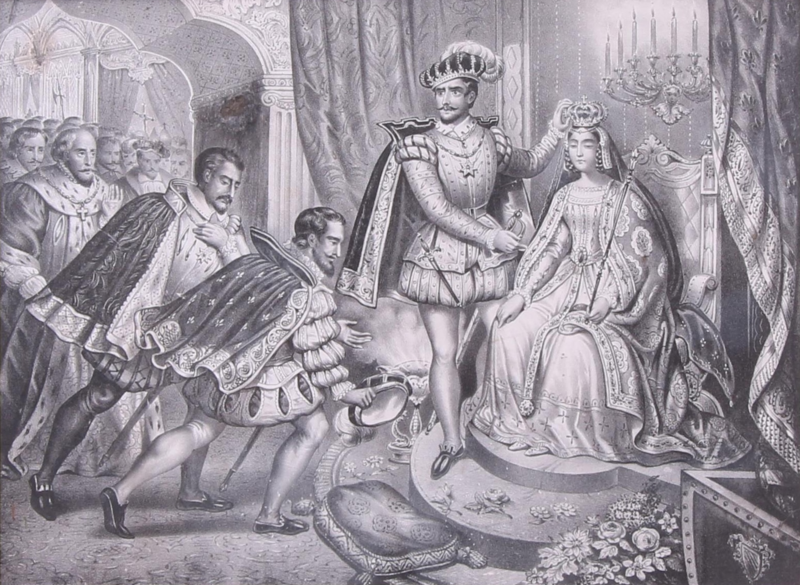The nobles belonged to an elite stratum of society in pre-Soviet Russia. This class owned the land even before the abolition of serfdom by the peasants who lived on it. In addition, this was a service class whose main duty was to serve the Fatherland. The concept of a nobleman first appeared in the 12th century, referring to a person who served “at court” with princes or the tsar. From the 14th century, the Russian nobility began to receive payment for service: lands called estates. Of particular importance when discussing the nobility is the reign of Peter I who, in 1714, secured these lands for eternal possession as a hereditary entitlement. This is how the family estates were born and the nobles began to be divided into uradel and servicemen. Columnar nobles are descendants of ancient noble families, recorded in the 16th century in a special Noble genealogical book. The uradel noblemen owned the hereditary lands. Ordinary nobles who had earned themselves in the sovereign service did not have the authority of their ancestors; behind them was only their own career.
In 1721, under Peter I, the Table of Ranks was published, the establishment of which led to the appearance of the noble rank. Since then, the position became more important than the origin. Peter I ordered that men begin their service from the very bottom, as ordinary soldiers. However, parents devised a workaround in order to protect their children from service in the lowest ranks. Sons from birth were enrolled in the Guards regiments and by the time they came of age they already held an officer’s rank. Military service was considered more prestigious than civilian activity. Engaging in creativity for a military nobleman was not considered honourable, and earning this for bread was indecent as it was just a noble pastime. It was important for the nobility to be useful.

In 1762, Peter III issued a Manifesto on the Liberty of the Nobility, exempting nobles from compulsory public service. The will of the nobility was reinforced with social guarantees by Catherine II in 1785, with the publication of the Certificate of Rights, Liberties and Benefits to the Noble Russian Nobility. This important document made it possible to serve or not to serve at will, relieved corporal punishment, declared the nobility noble and allowed the possession of serfs, and therefore was an important historical milestone. Now the nobles were the elite, above which came only the monarch. Part of the nobility left the optional sovereign service and settled on the estates. Those who served received the lowest rank first. Military service was considered more prestigious than civilian service.
To prove the rights of the nobility, the Literacy replaced the old genealogical books with books of six categories for each province, and this is where genealogical searches are most often conducted. The district leaders entered into these genealogical books only hereditary nobles with the same rights.
The sixth section of the books included the columnar nobility, which belonged to this class for 100 years before the published Charter.
The fifth category included titled surnames: princes, counts and barons.
The fourth contained the names of foreign nobles.
The hereditary nobility was distributed according to merit in the following order: in the first part, the births granted by the monarch, in the second, the ranks received in military service and in the third, in civil service.
Personal nobility could be granted by the monarch, received through military or civil service, or acquired as a result of awarding orders. It was not recorded in genealogical books. However, a nobility surname itself might be recorded in special books and this is where genealogical research begins. Most people hire a professional genealogist to find their noble ancestors.
A variety of noble estates are oases of beauty and tranquillity in which family life went on as normal. Childhood was spent on the estate. On becoming an adolescent, the child would leave for the city in order to study. They would then serve there and after service return to the estate. Seasonal rhythms also dictated certain traditions. The autumn brought the long-awaited time for hunting, after which the rich noblemen left for the winter in Moscow or St. Petersburg, and those who were poorer travelled to the district cities or stayed on the estates.
The whole life of a nobleman was subject to etiquette. From infancy, they developed an ability to restrain negative emotions and to observe ease, decency and respect for themselves and others in everything they did.
The heyday of the nobility was the War of 1812. The abolition of serfdom in 1861 weakened the nobility both economically and socially. The amount of land assigned to the nobles was also sharply reduced. By the beginning of the 20th century, hereditary nobles, who were once the sovereign’s support, lost their economic and administrative position. The nobility –which had once been the supplier of statesmen, generals, industrialists, city planners, artists, writers, the elite of society – had begun to decline. Subsequently, it became the “trigger of the revolution”. The Russian nobility was abandoned, as were the family estates. The estates and gardens were also abandoned, and this has often been reflected in Russian literature. The withering of the nobility continued without interruption so that by the end of 1917 the peasantry already owned about 90% of the land. Then, after the October Revolution, the decree of the All-Russian Central Executive Committee “On the destruction of estates and civil ranks” came into force, putting an end to all estates. The nobility officially ceased to exist.
enquiry![]() truegenealogist.com
truegenealogist.com
